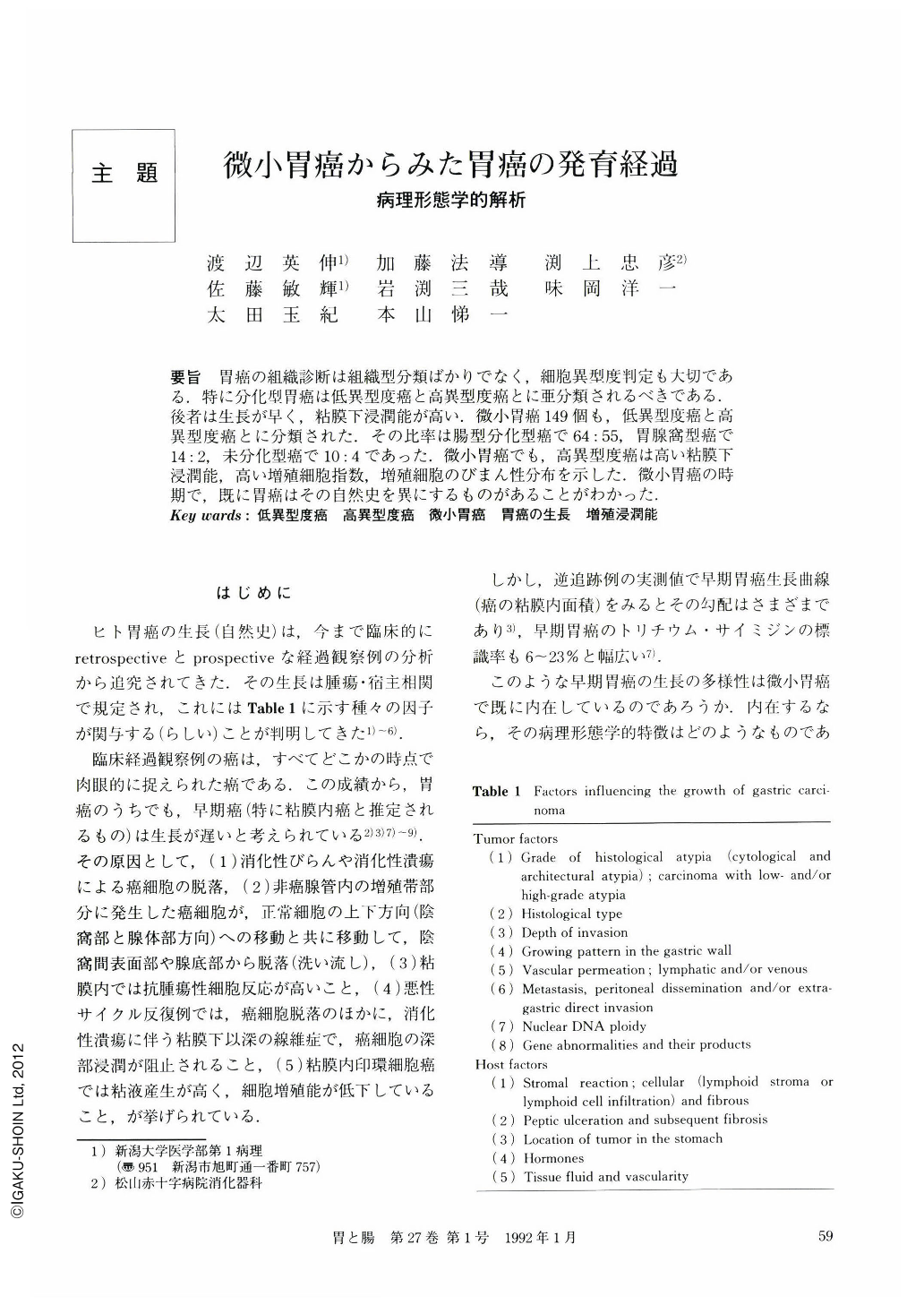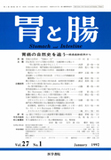Stomach and Intestine(Tokyo)
Volume 27, Issue 1
(January 1992)
胃と腸
27巻1号
(1992年1月発行)
Japanese
English
- 有料閲覧
- Abstract 文献概要
- 1ページ目 Look Inside
- サイト内被引用 Cited by
要旨 胃癌の組織診断は組織型分類ばかりでなく,細胞異型度判定も大切である.特に分化型胃癌は低異型度癌と高異型度癌とに亜分類されるべきである.後者は生長が早く,粘膜下浸潤能が高い.微小胃癌149個も,低異型度癌と高異型度癌とに分類された.その比率は腸型分化型癌で64:55,胃腺窩型癌で14:2,未分化型癌で10:4であった.微小胃癌でも,高異型度癌は高い粘膜下浸潤能,高い増殖細胞指数,増殖細胞のびまん性分布を示した.微小胃癌の時期で,既に胃癌はその自然史を異にするものがあることがわかった.
Grading of histological, especially cytological atypia is very important for understanding the natural history or growth of gastric carcinoma, as well as histological typing, depth of invasion, vascular permeation, and host reactions. Generally speaking, gastric carcinoma, especially early carcinoma, is divided into two histological or cytological grades; low-grade carcinoma and high-grade carcinoma. The latter shows rapid growth rate and high ability of submucosal invasion.
One hundred and forty nine gastric microcarcinomas were grouped into low-grade carcinomas (84 tumors) and high-grade carcinomas (61 tumors). The ratio (low: high) was 64:55 in differentiated type, intestinal type carcinoma, 14:2 in differentiated type, gastric foveolar type carcinoma, and 10:4 in undifferentiated type (diffuse or infiltrating type) carcinoma. The high-grade microcarcinoma revealed a higher ability of submucosal invasion, and high labeling index and diffuse distribution of PCNA positive cells.
It is concluded that gastric carcinomas already show a different natural history even at the stage of microcarcinoma.

Copyright © 1992, Igaku-Shoin Ltd. All rights reserved.


